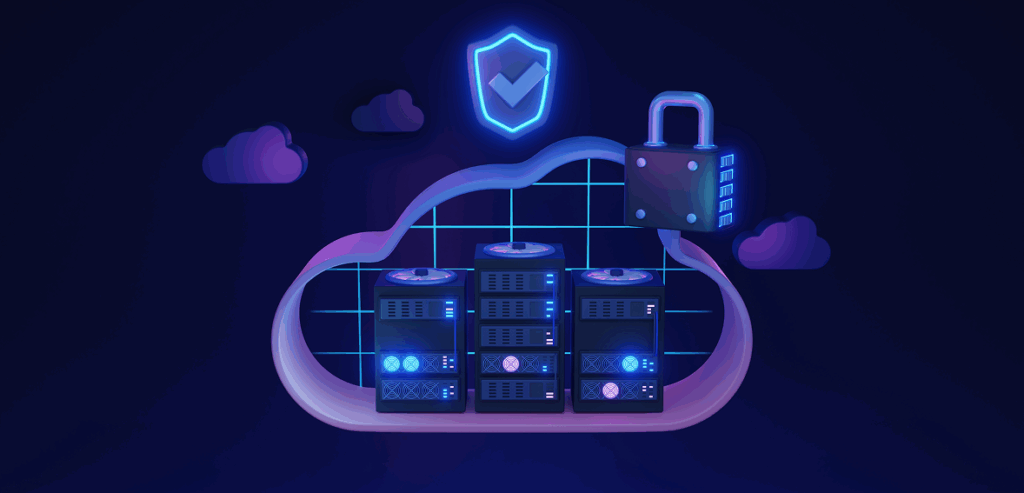
By Demi Wilkinson July 30, 2025
Managing a self-storage facility comes with a range of daily responsibilities, from tracking unit availability and customer data to processing payments and generating reports. For many small facility owners, spreadsheets have long been the default solution. They’re familiar, low-cost, and can be customized easily. However, as operations grow and expectations evolve, spreadsheets can start to feel more like a burden than a benefit.
Self-storage software offers a modern alternative with built-in tools designed specifically for storage operations. With features like automated invoicing, payment processing, and customer relationship tracking, this technology promises to streamline operations and improve both efficiency and accuracy.
Initial Cost and Setup
At first glance, spreadsheets seem like the most cost-effective choice. Most business owners already have access to Microsoft Excel or Google Sheets, and setting up a basic rental tracking system doesn’t cost anything extra. This can be a significant advantage for new or very small facilities with limited budgets.
However, while spreadsheets may be free, they come with hidden costs. The time required to design and maintain a spreadsheet system increases as your facility grows. You’ll need to manually update entries, calculate fees, and reconcile records. As operations scale, these tasks become more complex and time-consuming.
Self-storage software, on the other hand, often requires a monthly or annual subscription fee. Prices vary depending on the number of units, locations, and features included. But most platforms are cloud-based, with setup processes designed to get you running in a few days. They also include support and updates, which reduces the burden on you or your team.
Over time, what may seem like a high upfront investment in software usually proves to be more cost-effective due to the time saved on manual work and fewer costly errors.
Usability and Accessibility

Spreadsheets are familiar tools. Almost everyone has used them at some point, which makes them easy to adopt without training. You can customize them, create formulas, and design layouts to suit your specific needs.
The drawback is that spreadsheets are not designed for real-time, multi-user environments. If multiple staff members need access, you risk data conflicts or accidental overwrites. And if the file is stored locally rather than in the cloud, you’re limited to one access point, which isn’t practical for mobile staff or remote management.
Self-storage software is built for ease of use in storage environments. Most platforms offer intuitive dashboards, mobile access, and real-time syncing. Whether you’re checking occupancy levels, updating customer details, or reviewing payment history, everything is available with just a few clicks.
Advanced systems include automated billing self storage features, making it easier to collect payments without having to manually create invoices or track due dates. This level of automation simply isn’t possible with traditional spreadsheets unless you invest in complex scripting or integrations.
Scalability and Efficiency
Spreadsheets can handle basic tracking for a facility with a few dozen units. But as your business grows, maintaining accuracy becomes more difficult. Spreadsheets don’t warn you of double-bookings, overlooked payments, or missing information unless you build those checks yourself. The larger your customer base and the more units you manage, the harder it is to keep everything updated.
Self-storage software, in contrast, is designed to scale with your business. Whether you have 50 units or 500, the system tracks availability, leases, billing schedules, and customer communication with little extra effort. It can send notifications to customers, track delinquencies, and flag issues before they become serious.
The inclusion of automated billing self storage tools means that monthly rent collection happens in the background. The software automatically charges stored payment methods, sends reminders to tenants, and notifies staff of failed transactions or overdue accounts.
This scalability allows owners to focus on customer service and business development rather than routine data entry. In the long run, the efficiency gained offsets the subscription cost many times over.
Accuracy and Error Prevention
Manual entry is one of the biggest downsides of spreadsheet-based management. Even a small error—such as entering the wrong move-in date, payment amount, or tenant name—can throw off your records. With no built-in safeguards, mistakes often go unnoticed until they affect operations or customer satisfaction.
Spreadsheets also lack automation for calculations or late fee enforcement unless you create complex formulas. And even then, changes to those formulas can result in unexpected outcomes that go unchecked.
Self-storage software eliminates much of this risk through automation and validation rules. When entering a new customer, the software prompts you to include required fields and will not allow double-booking of units. Payments are tracked automatically, and invoices are generated without human input.
Using automated billing self storage systems adds another layer of accuracy. Tenants are billed on time, every time, reducing missed payments and confusion. With less manual handling, there are fewer opportunities for human error, which protects both your revenue and your reputation.
Security and Backup

Data security is often overlooked by spreadsheet users. A local file saved to your office desktop is vulnerable to theft, system crashes, or accidental deletion. Even cloud-based spreadsheets like those in Google Drive can be compromised if access controls are not properly set.
Spreadsheets also lack activity logs or user restrictions, meaning anyone with access can change critical information without leaving a trace. This makes it harder to track errors or protect sensitive customer data.
Self-storage software providers understand the importance of data security. Most platforms offer encrypted data storage, automatic backups, role-based access controls, and full audit trails. If a team member updates a record or processes a refund, you can see who did what and when.
Cloud-based automated billing self storage systems also add payment security through PCI-compliant processing and tokenization. This reduces your liability and ensures that customer card data is never exposed or mishandled.
When it comes to protecting your business and customer trust, secure software is a clear winner over spreadsheets.
Customer Experience and Communication
Your tenants expect convenience and transparency. If your business still relies on spreadsheets, communication is likely manual and inconsistent. You may forget to send reminders, miss renewals, or struggle to provide timely responses to customer inquiries.
Self-storage software improves the customer experience with built-in communication tools. Tenants can receive automated reminders before payments are due, confirmations when payments are received, and notices for lease renewals or promotions.
With automated billing self storage features, customers no longer need to worry about remembering due dates or mailing checks. They can store their payment details securely and let the system handle recurring charges.
Many software platforms also offer customer portals where tenants can log in, view their balance, update contact information, or download receipts. This self-service option reduces the number of calls and emails you need to handle manually and improves overall satisfaction.
A modern, responsive experience makes your business look more professional and gives tenants one less reason to look elsewhere when their lease is up.
Reporting and Business Insights
Spreadsheets can offer basic reporting if you’re comfortable with formulas and pivot tables. However, the process is time-consuming, and the insights are limited to what you’ve built manually. You have to remember to update each report, apply filters correctly, and check for inconsistencies.
Self-storage software gives you access to real-time reporting with zero extra effort. From occupancy rates and revenue tracking to delinquency monitoring and lease expiration summaries, everything is available in one dashboard.
This information helps you make data-driven decisions. For example, if your reports show a high percentage of vacant 10×10 units, you might lower the rate temporarily or offer a promotion. If delinquency is rising, you can adjust your reminders or payment policies.
Automated billing self storage platforms often include performance graphs and summaries that track revenue collected on time, late payments, and credit card decline rates. These tools are vital for understanding financial trends and planning for growth.
By turning data into action, software helps you stay ahead rather than constantly catching up.
Flexibility and Customization

One advantage of spreadsheets is their customization. You can build them exactly how you want, adding tabs for different data, creating dropdowns, and formatting cells to fit your process. This flexibility can be useful, especially in the early days of running a facility.
However, as your business grows, maintaining that customization becomes more difficult. One change to your spreadsheet could break a formula elsewhere. And training new employees to understand your unique system can be time-consuming and prone to missteps.
Self-storage software may seem more rigid at first, but most platforms offer customization tools within a structured framework. You can set billing rules, define unit types, create pricing tiers, and configure notifications to match your workflow.
Best of all, changes made within the software rarely disrupt other functions. You don’t need to be a tech expert to adjust settings, and support teams are available if you need help tailoring the system.
Even for small facilities, this balance of structure and flexibility helps standardize your operations while giving you control over how things run.
Long-Term Value and Business Growth
The final consideration in this cost-benefit analysis is long-term value. While spreadsheets may seem easier and cheaper in the short term, they often become a limiting factor as your business grows. They consume time, increase risk, and offer little support when it’s time to scale.
Self-storage software, on the other hand, grows with your business. Whether you add new units, hire staff, or open a second location, your system can adapt with minimal disruption. Every hour saved on admin work is an hour you can spend improving service, marketing your facility, or exploring new revenue opportunities.
Using automated billing self storage software also positions you as a modern, professional business. It shows tenants that you value efficiency and are committed to providing a reliable, secure experience.
From increased tenant satisfaction to better financial control, the long-term benefits of switching to dedicated software far outweigh the initial cost. In fact, many operators find that they recoup their investment in software within the first few months due to reduced manual labor and fewer billing mistakes.
Conclusion: Choosing the Smarter Path
Spreadsheets may be suitable for the earliest stages of running a self-storage business, but they quickly show their limitations as complexity grows. Issues with errors, limited access, and manual processes can hold back your business and frustrate your customers.
Self-storage software offers a comprehensive solution designed specifically for the industry. With features like automated billing self storage, secure data handling, real-time reporting, and customer communication tools, it provides a smoother, more professional experience for both you and your tenants.
While software does come with a financial cost, the time saved, errors prevented, and insights gained make it a worthwhile investment. Over time, it pays for itself by helping your business operate more efficiently, retain more tenants, and grow with confidence.
Choosing the right system for your facility is not just about tools—it’s about setting your business up for long-term success. When you weigh the costs against the benefits, self-storage software clearly emerges as the smarter, more sustainable choice.